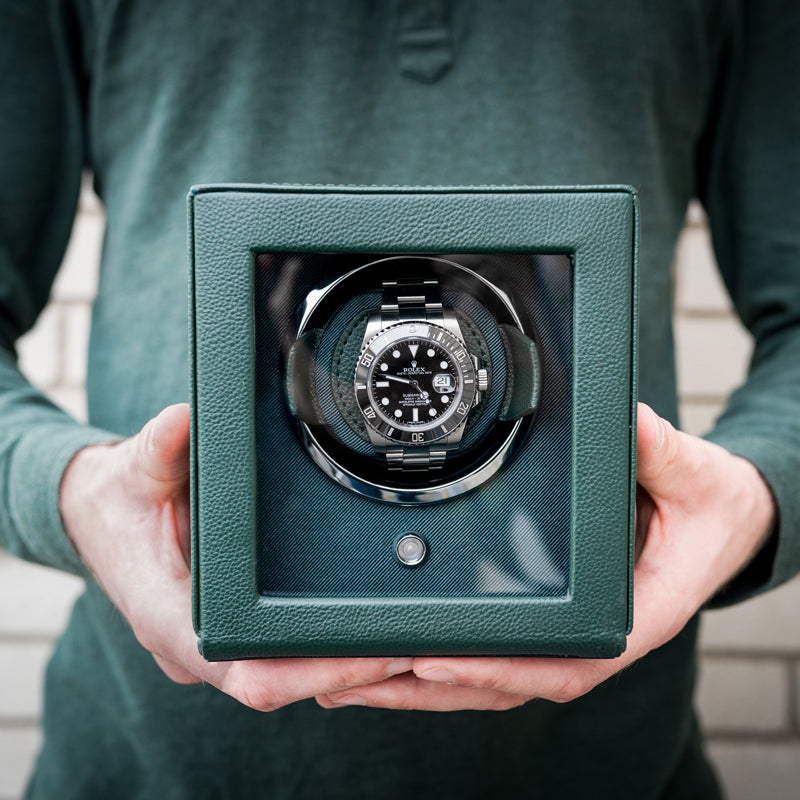Luxury watches are more than instruments for telling time they are mechanical marvels that embody heritage, craftsmanship, and precision engineering. But when an automatic watch is not worn daily, it eventually stops, requiring you to reset the time, date, and sometimes even complex complications. That’s where a watch winder becomes invaluable.
In this guide, we’ll cover everything you need to know about watch winders: how they work, why they’re important, which settings suit Rolex, Omega, Breitling, Patek Philippe and more, and the key terms you should know before buying one.
A watch winder is a device that mimics the natural wrist movement of wearing a watch. Automatic watches contain a weighted rotor that spins with motion, winding the mainspring. A winder gently rotates your watch to keep it powered when off your wrist.

Benefits include:
Before buying a winder, it’s important to understand a few technical terms:
Not every automatic watch requires a winder.
Myth Busting: A watch winder does not damage a watch when correctly matched. In fact, it can extend convenience and protect mechanical integrity.
Different watch movements require different TPD and direction settings. Here’s a quick-reference guide:
| Brand | Recommended TPD | Rotation Direction | Notes |
|---|---|---|---|
| Rolex | 650–800 | Bi-directional | Oyster Perpetual calibres are forgiving |
| Omega | 650–800 | Bi-directional | Co-Axial movements respond well to 650 TPD |
| Breitling | 650–800 | Bi-directional | B01 calibres typically bi-directional |
| Patek Philippe | 800+ | Counter-clockwise (CCW) | Many models are CCW only; check individual references |
| IWC | 800 | Bi-directional | Common across Pilot’s and Portugieser ranges |
| Panerai | 650–900 | Bi-directional | Higher TPD due to larger calibre sizes |
| TAG Heuer | 650 | Bi-directional | Most Calibre 5 and 7 movements |
When selecting a watch winder, consider the following:
Tip: Avoid cheap, unbranded winders poor motors can overwind, magnetise, or even damage your watch.
At WATCHO, we stock a carefully curated selection of watch winders from trusted brands. Whether you’re looking for a single-unit travel-friendly option for your Rolex or a multi-watch safe-compatible winder for your Patek Philippe collection, our experts can help match you with the right choice.
Do all automatic watches need winders?
No. They’re most useful for collectors and watches with complex calendars.
Can a watch winder damage my watch?
Not if used correctly. The danger lies in poor-quality winders with incorrect TPD or magnetising motors.
How many turns per day does my Rolex need?
Most Rolex models run best at around 650 TPD, bi-directional.
Do quartz watches need winders?
No. Quartz watches run on batteries.
Is it okay to leave a watch on a winder permanently?
Yes, if matched correctly. Good winders simulate natural wrist motion with programmed rest periods.
A watch winder is more than a convenience it’s a tool that respects the craftsmanship of your timepiece. By matching your watch to the correct settings, you’ll keep it running smoothly, protect delicate components, and always have it ready to wear.
Whether it’s a Rolex Submariner, an Omega Speedmaster, or a Patek Philippe Annual Calendar, choosing the right winder makes all the difference.